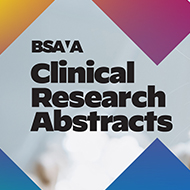Infection reported for the first time in a pinniped
It has been confirmed that an injured seal found on the south coast of Cornwall last year was infected with bovine tuberculosis (bTB).
The grey seal pup (Halichoerus grypus) is believed to be the first reported pinniped to have contracted the infection.
Found in January 2012, the four-month-old seal was taken to the Cornish Seal Sanctuary in Gweek for rehabilitation.
According to a report published by the Veterinary Record in June, the pup responded poorly to antibiotics.
Due to the poor prognosis and concerns that handlers could also become infected, the animal was euthanised four months after arriving at the sanctuary.
The postmortem examination was carried out under the Animal Health and Veterinary Laboratory Agency (AHVLA) Diseases of Wildlife Scheme (DoWS).
According to the published report, the genotype of TB that was isolated - M bovis - is not commonly found in south west England, where the seal pup was discovered.
The M bovis isolate is most readily found in south west Wales, suggesting that the infection could have been contracted there.
The genotype has been isolated in badgers in south west Wales and there is a high incidence of M bovis in cattle in the region.
A spokesperson for the AHVLA commented: "This is an unusual case, which illustrates the possibility that bovine TB can spread from one species to another.
"Bovine TB is usually transmitted through the exchange of respiratory secretions between infected and uninfected animals, usually when animals are in close contact with each other but in this case it appears to have been transmitted though a bite wound."
However, authors of the report stress that it is not possible to determine for certain the cause of the infection, nor that the seal was contaminated in south Wales.
The full report has been published online ahead of print by the Veterinary Record.
Image credit: Mike Pennington



 The BSAVA has opened submissions for the BSAVA Clinical Research Abstracts 2026.
The BSAVA has opened submissions for the BSAVA Clinical Research Abstracts 2026.